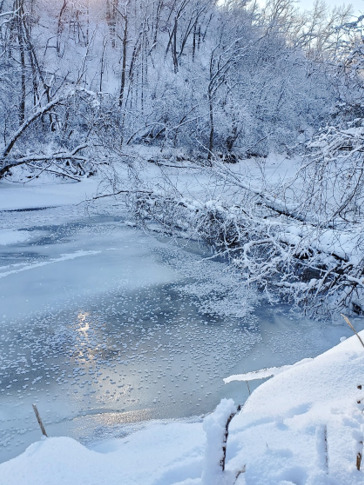When you live in Minnesota, the word “cold”, really depends on your definition of cold.

A “walk in the woods” cold

An “eyes will freeze” cold
The Farmers Almanac issued their winter forecast about 3 weeks ago, in the middle of our hot streak. About that time many of us might have welcomed a good old-fashioned cold smack down by Mother Nature.
The El Nino vs La Nina topic often goes with these predictions. I had questions so I went to the National Oceanic and Atmospheric Administration (NOAA) to get an explanation of these phenomena. From their website:
Episodes of El Niño and La Niña typically last nine to 12 months but can sometimes last for years. El Niño and La Niña events occur every two to seven years, on average, but they don't occur on a regular schedule. Generally, El Niño occurs more frequently than La Niña.
Well, that clears it up!
This year, according to the Old Farmer’s Almanac, the indications are that an El Nino will be presiding over this winter bringing “cold temperatures throughout the country and bring snow, sleet and ice. This from their website:
Our extended weather forecast, which is based on a mathematical and astronomical formula, calls for below-average temperatures and lots of snowstorms, sleet, ice, rain for much of the Great Lakes, Ohio Valley, and Midwest areas of the country, as well as central and northern New England, especially in January and February. (Brrr…)

The Twin Cities recorded 90.3 inches of snow for the 2022/23 winter season. For the record, last winter was the 3rd snowiest on record for the state of Minnesota. Some of you may still carry the trauma of shoveling, snow blowing and driving in it!

Ugh, again!
The snowfall felt like it should have alleviated some of our drought conditions, and it did, for a time. Unfortunately, as the Garden Scoop reported earlier, our drought only deepened this summer due to the excessive heat and little rainfall.
As for the reliability of the Farmers Almanac? I discovered this information from CBSnews:
There are actually two Farmers' Almanacs: the (just plain) Farmers' Almanac has been predicting since 1818 and the Old Farmers' Almanac since 1792.
Both say they average 75% to 80% accuracy, but some meteorologists put the Old Farmers' Almanac to the test, saying it's probably closer to 50%.
I would say we all probably have a 50/50 chance at getting it right! ???? Climatologists will point to the Almanac’s “secret” formula for predicting weather and the broad range of their predictions that make those predictions sketchy.
NOAA has a different opinion of our 2023/24 winter.


For Minnesota, it looks like warmer temperatures and less precipitation. I’m happy about warmer temperatures but I really would like to see some nice snowfall, along with some good soaking rains next year. My guess is YOU WOULD TOO!
May the weather gods be with us,


